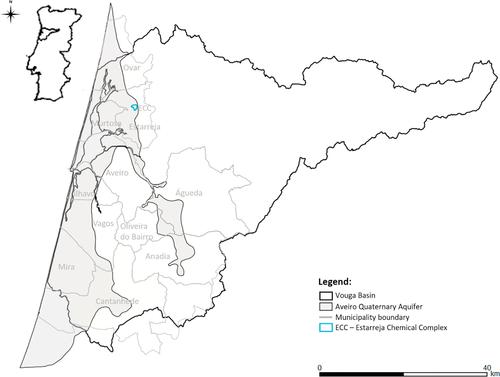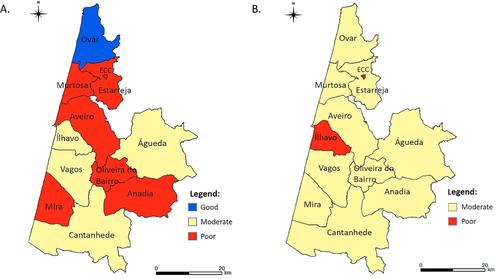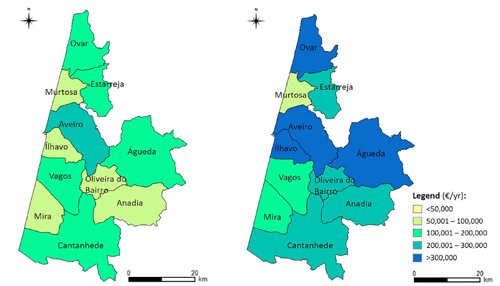Groundwater resources around the world are subject to increasing pressures, ranging from over-extraction to pollution from both point and diffuse sources. Hazardous chemicals from industrial contamination, leaking residential septic systems, and fertilizers and pesticides from farmland threaten groundwater quality. Diminished groundwater quality has impacts on human health, local ecosystems, and social and economic activities that use on the resource. In 2010, almost 30% of the world’s population relied on groundwater resources. As much as 75% of the European population uses groundwater for both direct and indirect purposes. Direct uses include extraction for drinking water, irrigation or industrial production, while indirect uses might include the role of groundwater in sustaining wetland functions. Groundwater may also have important ‘non-use value’ if people currently not using it place value on its continued existence or pristine state, or want to preserve it for future generations.
In order to protect groundwater resources, the European Union adopted the Groundwater Directive in 2006. The Directive aims to achieve good water quality for all European groundwater bodies and identifies chemical threshold values to guarantee the protection of human health and the environment. Although the objectives of the Directive are essentially biogeochemical in nature, its implementation requires careful balancing of the costs of groundwater protection and the associated environmental, social and economic benefits. Costs of protection are usually relatively easily to quantify. Benefits are much more difficult to estimate. Some values associated with groundwater may be directly observable in economic markets, for example if users pay a fee for the quantity of water they extract. Often, however, groundwater values are not directly observable and can only be estimated using non-market valuation methods, such as contingent valuation surveys, to assess public perception and valuation of groundwater quality improvements.
Methodology
Successful integrated groundwater resources management must take into account the whole spectrum of different groundwater values and quality levels. Yet, the number of economic valuation studies focusing on groundwater protection is very limited. In this study, conducted around the Aveiro Quaternary Aquifer in north-western Portugal, (Fig. 1) we aimed to add to the limited empirical evidence base and assess the societal value of groundwater protection by asking groundwater users and non-users about their willingness to pay for increased protection levels.

Figure 1: Location of the Aveiro Quaternary Aquifer (AQA) in the Vouga basin, Portugal.
This aquifer has been intensively exploited as result of growing urban settlements, agricultural and industrial activities, and private wells. The specific characteristics of the aquifer (surficial, easy to access, easily recharged by precipitation, and high productivity) make it a popular resource, but also very vulnerable to contamination. The aquifer is therefore considered ‘at risk’ due to poor water quality status. Among the main pollution sources to the aquifer are 1) diffuse nitrate pollution from agriculture activities, 2) nitrates from domestic and industrial wastewaters, 3) localized increase of chloride, as a result of saline intrusion due to over-abstraction and 4) mercury, arsenic, trace elements, organic compounds, chloride, sulphate and nitrates found near the second largest petro-chemical complex in Portugal (Estarreja Chemical Complex).
In order to effectively communicate the benefits of different groundwater protection levels to the public, and capture local residents’ perception of the importance of its protection, a groundwater quality valuation ladder was developed based on the concentration levels of three pollutants: nitrate, chloride and sulphate. The ladder links groundwater quality threshold values of these pollutants to the resource’s main uses (irrigation and drinking water) and natural background levels associated with non-use. The groundwater quality ladder was used in a survey targeting a representative sample of 1,200 households living in the 11 municipalities covering the aquifer. Besides asking respondents for their perception of groundwater quality, and their willingness-to-pay for groundwater quality improvements based on the ladder, a series of questions also focused on their groundwater use to gauge the social and economic importance that the resource has to local populations.
Outcomes
Approximately half of the sample population has a private well, of which 25% use the water for drinking and 80% for irrigation of their gardens and lands. An interesting picture emerges when comparing public perception of the water resources’ quality with the actually measured quality for the region within the aquifer in Fig. 2. Overall, public perception of water quality seems to be better than the actual situation in six municipalities, while public perception is worse than the actual situation in only two municipalities. Relatively many respondents perceive water quality as (very) poor in Estarreja and the villages around the Estarreja Chemical Complex (55%).

Figure 2: Actual overall water quality in the Aveiro Quaternary Aquifer region (A) and public perception of water quality (B).
On average, respondents were willing to pay €3.6 euros per month extra in addition to their current water bill to improve the quality of all water resources, with most respondents (62%) preferring the groundwater’s natural background levels, 30% preferring drinking water quality, and only 5% preferring to stay at irrigation water quality. Mean willingness-to-pay is, as expected, highest for natural background levels, followed by drinking water quality, and lowest for irrigation water quality. A blend of human use and non-use considerations seems to have prevailed when answering the willingness-to-pay question for groundwater quality protection.
The total economic value for different groundwater threshold values (i.e. irrigation water quality, drinking water quality and natural background levels) is derived through the aggregation of the average willingness-to-pay values across the relevant population of beneficiaries (Fig. 3). Aggregated across the entire aquifer, the estimated total economic value is €1.5 million annually for safe drinking water quality and €3.5 million annually for groundwater containing natural background levels.

Figure 3: Total economic value in 2016 euros per year for the different groundwater quality levels: safe drinking water quality on the left and natural background levels on the right.
Conclusions
The novelty in this study is the integration of policy-relevant biophysical indicators with human use and non-use values of groundwater resources, as reflected in the groundwater quality ladder. The estimated values can be used to prioritize groundwater protection measures, both in terms of setting appropriate threshold values, and with spatial targeting based on the geographical distribution of beneficiaries who expressed a positive willingness-to-pay for improved groundwater quality. The expected societal benefits can also be compared to the estimated groundwater protection costs from implementation of the EU’s groundwater directive. Public willingness-to-pay for improved groundwater quality is considerable, varying between 20 and 30% over current water bills that local residents pay for safe drinking water quality and natural background levels, respectively
Brouwer, R., Ordens, C.M., Pinto, R., Condesso de Melo, M.T. (2018). Economic valuation of groundwater protection using a groundwater quality ladder based on chemical threshold levels. Ecological Indicators, 88, 292-304.
Contact: Roy Brouwer, Department of Economics
For more information about WaterResearch, contact Amy Geddes.







